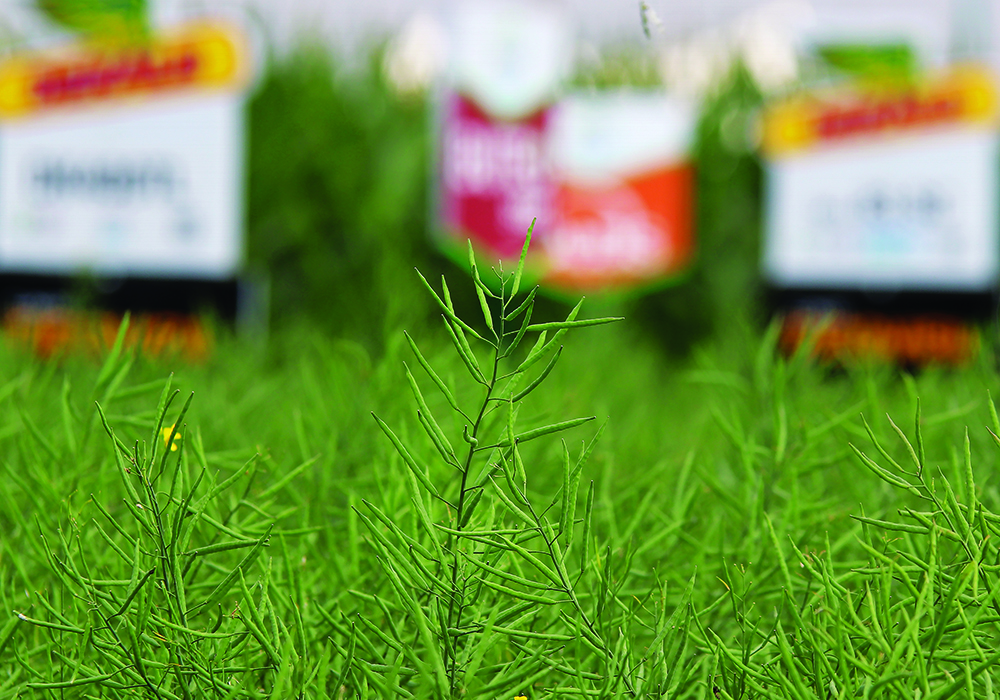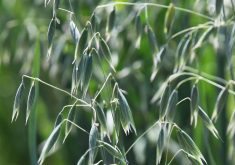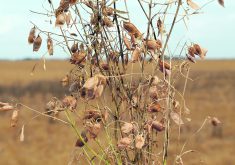Canadian canola breeding programs are shifting to a focus on boosting yields rather than protecting them, says an industry official.
Yield growth has been disappointing.
In 2014, the Canola Council of Canada established a target of achieving a national average yield of 52 bushels per acre by 2025.
That isn’t going so well.
Other stories in the 2023 Canola Yearbook:
- Decent yields in dry times
- Canola views – photo essay
- Canola growing season in review
- Spraying in dry times can be tricky
- Flying the fields
- Hormone imbalance suspected for malformed racemes
- Production briefs
- Pest roundup: Canola pests kept in check by dry conditions
- Disease roundup: Verticillium has breakout year
- Canola news briefs
- Canola growers scramble to address federal policy issues
- What happens when the big crop comes?
- Bids tumble but canola demand is firm
Statistics Canada’s initial estimate for the 2023 crop is a yield of 35.4 bu. per acre. The average over the previous 10 years has been 39 bu., with a record level of 41.9 reached in 2019.
Courtney Welch, canola products manager with Canterra Seeds, said environment and agronomics have factored into the disappointing performance.
But it is also the byproduct of a breeding focus on getting various agronomic traits incorporated into today’s varieties.
“When you add traits like clubroot resistance, blackleg resistance, earlier maturity and pod shatter traits, it does tend to pull that yield back a little bit,” she said during a July interview at the Ag in Motion show in Langham, Sask.
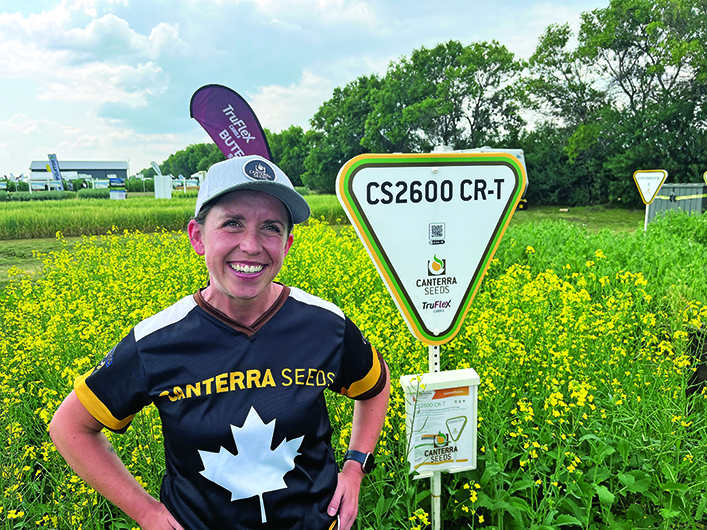
“Now that companies have got that baseline of disease protection into their hybrids at this point, we can start focusing on yield again.”
Welch said those disease and herbicide tolerance traits help protect yields, but they are not designed to enhance yields.
She believes seed technology companies are starting to focus more on yields, and that a 52-bushel average may be attainable in about five years.
Ryan McCann, director of seed for Canada for Nutrien Ag Solutions, agrees with Welch’s assessment.
He said breeders have never ignored yield, but they have been more focused on agronomic traits like clubroot resistance and harvest management because those were pressing issues.
“Every time you put more of those traits in, you’re probably not as focused on yield as you normally are,” he said at the farm show.
But yield is becoming a pressing issue as well now that a bunch of new crush facilities are under construction in Saskatchewan. They are going to require plenty of canola.
“There’s going to be a pretty big need in that brown and dark brown soil zone to fill those plants,” said McCann.
That is where yields have been lackluster.
McCann thinks the key in that region will be yield stability because there is already plenty of genetic potential embedded in today’s crops.
That might mean introducing a different herbicide tolerance trait for weeds like kochia, which is a problem in the brown soil zones.
Or it could mean developing earlier maturing varieties because the brown and dark brown soil zones tend to have early rains and then the moisture stops.
“You want your canola to be through that flowering in those geographies before that tap shuts off and the heat comes on,” he said.
Eric Comte, campaign marketing manager for Bayer’s DeKalb brand, said the disappointing yield performance in Western Canada has more to do with environmental conditions than anything else.
He said there is plenty of yield potential already baked into today’s varieties.
“The potential is very significant and very high,” he said.
“Under ideal growing conditions, where everything lines up, we’re looking at top-tier opportunities for sure.”
The company has been busy transitioning much of its portfolio to the TruFlex trait launched a few years ago and can now turn its attention to other breeding priorities.
One of those priorities is raising the yield floor by focusing on issues like weed management, disease packages and harvest management.
DeKalb’s new 900-series canola is a good example of that. The TruFlex hybrid offers the Straight Cut Plus trait in combination with clubroot and blackleg resistance.
“The 900-series has been dynamite for us, and that’s really what we’re excited about,” said Comte.
Darrin Hicks, senior manager for InVigor hybrid canola with BASF, said there is already real-world proof that today’s hybrids can deliver.
“There are all kinds of stories around growers who are achieving 80-plus bushel yields, so the potential is there if the conditions are right,” he said.
But the conditions haven’t been right. Diseases like clubroot, blackleg and verticillium stripe, and pests like flea beetles have taken their toll on yields.
Drought has been the biggest factor preventing growers from unlocking the potential in today’s varieties.
“At the end of the day, these crops are affected by weather,” he said.
BASF is working on a few traits to help bolster yields.
“In Alberta, maturity is still a concern with the shorter growing season, so we’re pushing that, trying to develop early maturing hybrids,” he said.
The company’s new 300-series hybrids offer everything from a 10 percent yield improvement to an enhanced oil profile, to a combination of both.
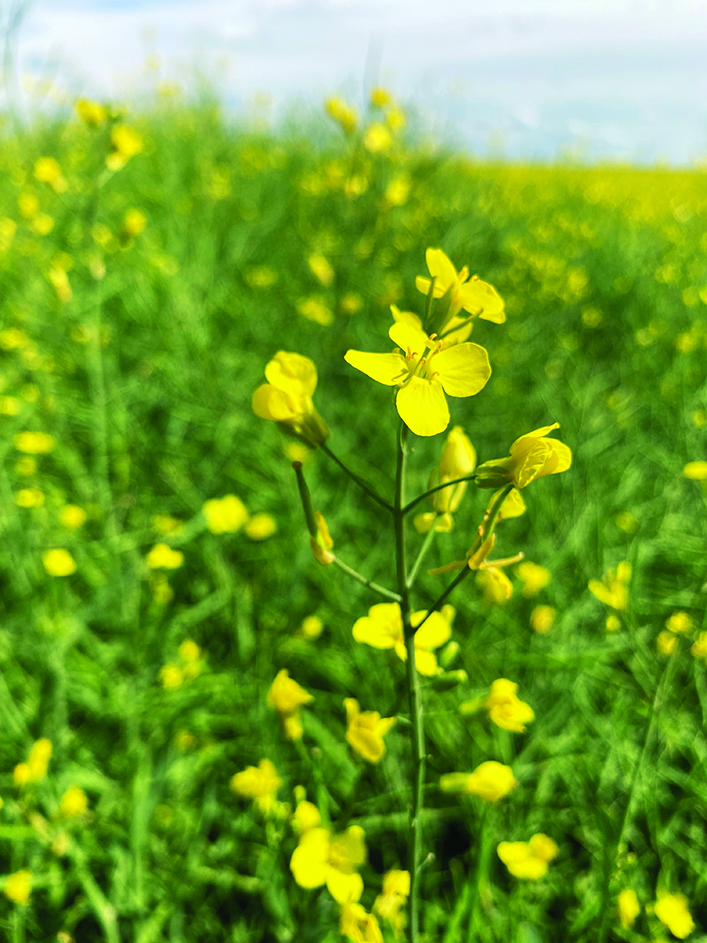
The varieties come with pod-shatter reduction and clubroot resistance traits.
“The pipeline is really full in terms of high-performing hybrids chasing yield, which is what farmers ultimately want,” said Hicks.
Welch said Canterra has six experimental varieties in the pipeline. Three are LibertyLink, two are TruFlex and one has the Clearfield trait.
They all have the company’s new pod protection trait, first and second generation clubroot resistance and blackleg resistance.
McCann said Nutrien supports its strategic partner brands, but it also runs its own Proven Seed breeding program based out of Saskatoon.
The company is most excited about its new PV 781 TCM TruFlex canola and its PV 661 LCM LibertyLink canola with multigenic clubroot resistance, blackleg resistance and the ability to straight cut under the right conditions.
“Those are our two big varieties that we’re launching this upcoming year and we’re really excited about them,” said McCann.
The company also has eight experimental varieties in the final stages of testing. It is focusing on early-season and mid-maturity products to make sure there are good fits for all the climates in Western Canada.
Nutrien encourages growers to grow varieties containing both types of maturity on their farms.
“(Don’t) put everything in one variety because then if the rain comes at the wrong time or the heat comes at the wrong time, then you could be in trouble,” said McCann.
Contact sean.pratt@producer.com


